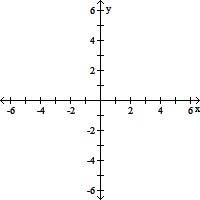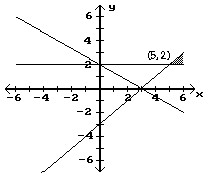Graph the system of inequalities.2x + 3y ? 6x- y ? 3y ? 2 
A. 
B. 
C. 
D. 
Answer: B
You might also like to view...
Find the general solution of the differential equation. Use C, C1, C2, . . . to denote arbitrary constants. If used, do not simplify hyperbolic functions.y'(t) = 7 + e-3t
A. y = 7 -  + C
+ C
B. y = 7t -  + C
+ C
C. y = 7t + e-3t + C
D. y = -3e-3t + C
Provide an appropriate response.Which of the following sequences do not meet the conditions of the Integral Test? I. an = n(sin n + 1) II. an =  III. an =
III. an = 
A. I only B. I, II, and III C. II and III D. I and III
Determine whether the graph of the given equation is symmetric with respect to the x-axis, the y-axis, and/or the origin.y = -5x2 - 1
A. No symmetry B. Origin C. y-axis D. x-axis
Eliminate the parameter to find a description of the circle or circular arc in terms of x and y.x = 2 cos t, y = 2 sin t; -? ? t ? ?
A. x2 + y2 = 2; The curve is a circle with center (0, 0) and radius 2; the curve begins at (-4, 0) and is oriented counterclockwise, ending at (-4, 0). B. x2 + y2 = 4; The curve is a circle with center (0, 0) and 2 in Quadrants III and IV; the circular arc begins at (-2, 0) and is oriented counterclockwise, ending at (2, 0). C. x2 + y2 = 4; The curve is a circle with center (0, 0) and radius 2; the curve begins at (-4, 0) and is oriented counterclockwise, ending at (-4, 0). D. x2 + y2 = 4; The curve is a circle with center (0, 0) and radius 2; the curve begins at (-4, 0) and is oriented clockwise, ending at (-4, 0).